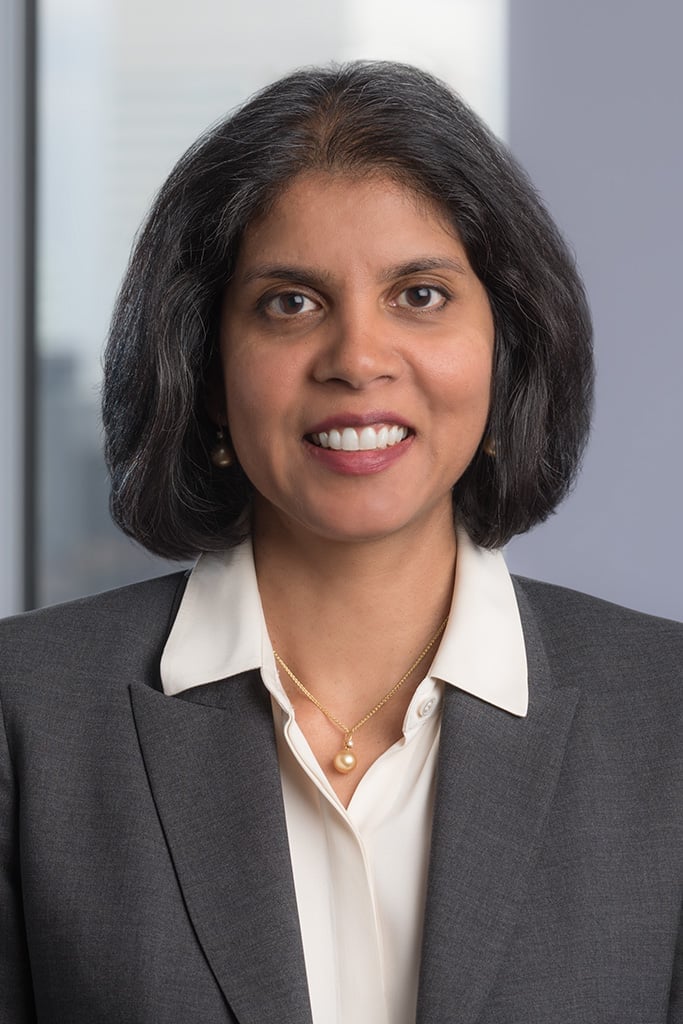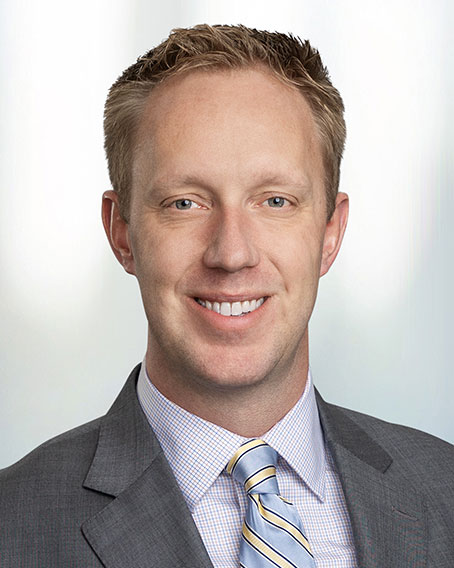On this Ropes & Gray podcast, asset management attorneys Amanda Persaud and Kevin White discuss reasons why a sponsor would consider conducting a GP-led secondary transaction. Ropes & Gray has recently been ranked as the #1 firm in the 2023 Secondaries Investor Annual Survey, and the market for these transactions has grown significantly over the last several years. Many sponsors who have not previously been involved in this market have entered this market and found the transactions to be highly appealing. Amanda and Kevin explore several of the rationales for why sponsors have found these transactions so appealing.
Transcript:
Amanda Persaud: Thank you for joining us today on this Ropes & Gray podcast, the latest in our series of podcasts and webinars focused on topics of interest for asset managers and investors. I’m Amanda Persaud, a partner in our asset management group based in New York. Joining me today is my San Francisco–based asset management colleague, Kevin White. Today, we will be discussing GP-led secondaries.
As a brief recap, GP-led secondary transactions, generally speaking, involve one sponsor-advised fund selling one or more portfolio companies to a newly formed continuation vehicle, or, as you’ll hear us refer to in this podcast, a “CV.” That sale is happening to a set of new investors. Investors in the existing fund have an opportunity to be cashed out of their share of the underlying portfolio company using the proceeds contributed to the CV. Alternatively, these investors can roll their investment into the CV.
The market for GP-led secondary transactions has grown dramatically over the last few years. By way of example, in just March of this year, a presentation by a leading investment bank that’s been active in this space now for quite some time noted that the total GP-led secondary volume in 2021 stood at roughly $68 billion—that was up from $7 billion just six years earlier. Although the bank noted a dip in 2022 to $52 billion, they are projecting an increase from that number in this current year.
Another interesting observation is that, besides the usual institutional investors who have been buyers in continuation vehicles, we have been seeing an uptick in certain fund sponsors, those that may perhaps have been managing buyout funds, real estate funds, growth funds, and the like. They are showing up with greater frequency on the buy side as well.
We have also seen fund sponsors that were previously unfamiliar with continuation vehicles entering into the market, and these fund sponsors run the gamut of smaller sponsors investing primarily in the lower-middle market to larger-cap sponsors that might have multiple funds and fund strategies under their belt. It’s these particular fund sponsors—meaning the ones that previously had been unfamiliar or newer to the continuation vehicle transaction—that are going to be the focus of today’s conversation. We have found that sponsors have a wide range of rationales for exploring GP-led secondaries—often those rationales begin very differently from one sponsor to the next, and yet, all of the reasons for going into these transactions can be quite compelling.
Before we kick off our discussion about the rationale, we did also want to highlight one newer development—which many of you may have seen—which is the recently published guidance by the Institutional Limited Partners Association (ILPA) on GP-led secondaries. In this guidance, ILPA encourages investors to probe into a sponsor’s rationale for engaging into these transactions.
Obviously, more to come on that front, but for our particular podcast, I will now hand it off to Kevin to give us a little bit more insight into what we’re hearing from our sponsors as they undertake these transactions.
Kevin White: Private equity funds almost invariably have a fixed term. Once that term is up, the sponsor needs to liquidate the positions and return the proceeds to investors. What’s a manager to do, though, if the manager has conviction that its management of a set of portfolio companies will continue to unlock gains on the investments? Selling portfolio companies to a third party would upend all that. Transferring the assets to a successor blind pool fund would allow for continued management of the assets, but doing so could eat up all the dry powder for that successor fund or result in it being more highly concentrated in one or a few positions than would be appropriate. Transferring the assets to a continuation vehicle allows for a longer runway but without the limitations associated with transferring to a successor blind pool fund. We find that a typical CV has a term of about five years, subject to customary extensions. Amanda, what other rationales have you seen?
Amanda Persaud: We’ve seen sponsors cite the availability, as you mentioned, of dry powder as a reason for wanting to conduct a GP-led secondary. These deals typical require the investors who fund the capital to the CV to make an unfunded commitment. Even those who roll their commitment from the existing fund will be expected to roll a portion of their remaining unfunded commitment to the existing fund, if any, and possibly make a fresh incremental unfunded commitment. There are a couple of reasons for this. First, if a sponsor is finding that one or a subset of portfolio companies has more follow-on opportunities than initially expected, it may not have the available dry powder in the existing fund to make those follow-on investments. Also, the existing fund’s governing agreement likely has concentration limits, and repeated follow-ons would definitely trip those limits. Transferring the portfolio companies at issue to a continuation vehicle certainly helps resolve those issues.
Kevin White: Sometimes the decision to conduct a GP-led secondary can be driven by the early success of a subset of portfolio companies. If a manager has a 10-year or longer horizon on an investment but that investment has popped in value within just a few years, there can be an incentive among all parties involved to lock in some of those gains. Transferring those portfolio companies to a CV with a roll or sell election for current investors gives investors an opportunity to realize some of those gains now. Unlike a traditional sale to a third party, a transfer to a CV allows those investors who want to maintain their exposure to the portfolio companies an opportunity to roll that exposure to the CV.
Similarly, the transfer to the CV can result in the realization of carried interest for the sponsor; though, of course, the sponsor needs to be mindful of the three-year holding period. Realization of carry can be a reward to those employees of the sponsor who have worked hard to improve the portfolio companies. GP-led secondaries often involve a full roll of realized carry to the CV, but that’s not always the case. Even when it is, it’s an opportunity for the sponsor to increase its skin in the game with these portfolio companies, significantly, since that rolled carry will convert to a capital interest.
Amanda Persaud: Related to the notion you mentioned of locking in gains for investors is that a GP-led secondary is an opportunity to let investors calibrate their liquidity profile and exposure to different asset classes. Investors have their own liquidity concerns to manage, not surprisingly, and that includes handling redemption requests perhaps from their own base of investors. Investors may also have requirements to allocate certain percentages of assets to different asset classes. If an investor is overallocated to private equity because of the performance of its different asset classes, a liquidity option through a GP-led secondary can resolve that.
One of the other justifications, which you touched on previously, Kevin, is that the secondary can also allow for continued alignment of incentives for the sponsor as the sponsor’s personnel grow and evolve. It’s possible that former employees, for example, continue to receive carry despite not having been involved in the management of, let’s say, a portfolio company, for several years. Likewise, there might be new employees who have become intimately involved in a portfolio company but have low carried points to show for it.
Kevin, give us a little insight on how a new CV could be beneficial to employees that are working on some of these portfolio companies.
Kevin White: Happy to do so, Amanda. Moving portfolio companies to a CV typically involves forming a new general partner as general partner of the CV. The sponsor can allocate carried interest points for that new general partner vehicle however it desires. Thus, a GP-led transaction can result in former personnel getting a “thank you” in the form of getting liquidity for their carry interest, possibly at a significant step up to the value of the portfolio companies at the time they left the sponsor, while allowing new personnel to have better aligned incentives. I would note that, while the expectation is for 100% roll of crystalized carried interest, it is common in these deals to exclude the roll of carry attributable to former personnel—those people could be cashed out.
I would also note, lastly, that a GP-led secondary is an opportunity for a sponsor to establish new relationships with new institutional investors. Secondaries investors frequently also have a primary investment team and a co-investment team. Establishing a relationship through a GP-led secondary greases the wheels to source primary investments in future fundraises.
Amanda Persaud: Thank you, Kevin, for joining me today for this discussion, and thank you to our listeners. For more information on the topics that we have discussed or any other topics of interest to the asset management community, please feel free to visit our website at www.ropesgray.com. And of course, we can help you navigate any of these topics that we have discussed, so please don’t hesitate to get in touch. You can also subscribe and listen to this series wherever you regularly listen to podcasts, including on Apple and Spotify. Thank you again for listening, and have a good day.
Stay Up To Date with Ropes & Gray
Ropes & Gray attorneys provide timely analysis on legal developments, court decisions and changes in legislation and regulations.
Stay in the loop with all things Ropes & Gray, and find out more about our people, culture, initiatives and everything that’s happening.
We regularly notify our clients and contacts of significant legal developments, news, webinars and teleconferences that affect their industries.




